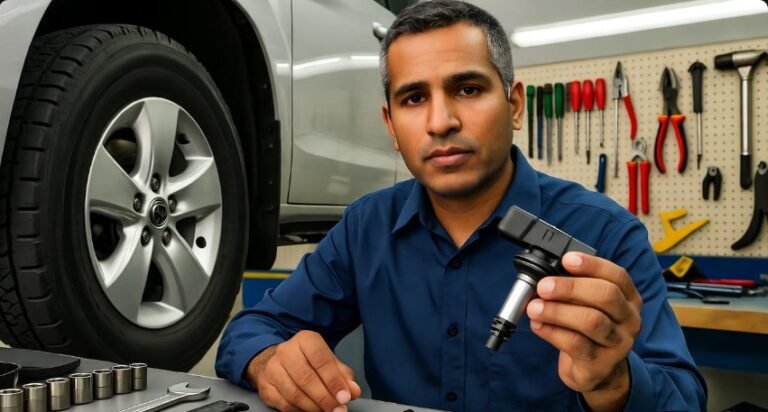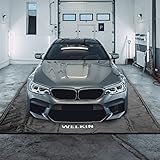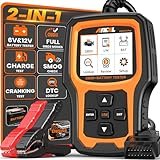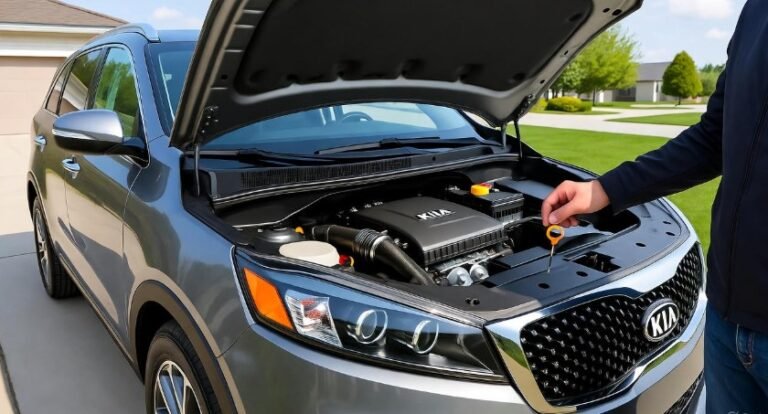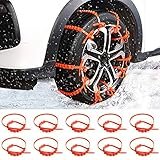5 Best Anti Glare Film for Car Windshield Picks Online
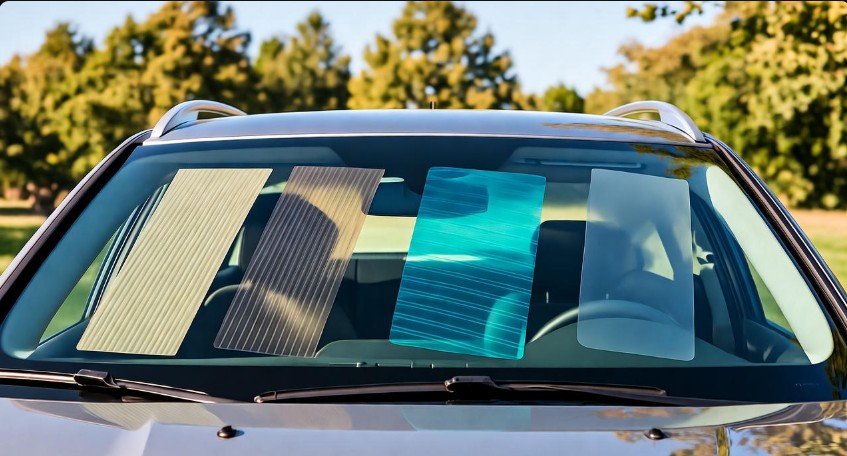
Choosing the 5 best anti-glare film for your car windshield online is crucial for safer driving. Our guide simplifies the process, helping you find the perfect film to reduce sun glare and improve visibility.
Key Takeaways
- Reduce blinding glare for safer driving.
- Improve visibility in bright sunlight.
- Choose film based on tint level and material.
- Proper installation ensures best performance.
- Consider durability and UV protection.
Driving in bright sunlight can be challenging, and the glare from your car’s windshield can be downright dangerous. You might find yourself squinting, shielding your eyes, or even struggling to see the road ahead. This is a common problem for drivers across the USA, but thankfully, there’s a simple solution: anti-glare film for your car windshield. These films are designed to significantly reduce the intensity of sunlight reflecting off your glass. But with so many options available online, how do you pick the best one? Don’t worry; we’re here to guide you through it, making it easy to find the perfect anti-glare film to enhance your driving experience.
Understanding Windshield Glare and Anti-Glare Film
Windshield glare is caused by sunlight reflecting off the smooth surface of your car’s glass. This reflection can scatter light, making it difficult to see clearly and increasing the risk of accidents. Factors like the angle of the sun, the cleanliness of your windshield, and even the type of glass can influence how much glare you experience.
Anti-glare film, often referred to as a glare reduction film or sun control film, is a thin layer of material applied to the inside of your windshield. It works by filtering out a portion of the sun’s intense light and reducing the amount of reflected glare. Think of it like wearing sunglasses for your car’s windshield. These films can also offer additional benefits, such as UV protection and a slight tint that can further enhance comfort.
The primary goal of anti-glare film is to improve visibility without significantly obstructing your view. This is especially important for drivers in sunny states like California, Florida, and Arizona, where sun glare can be a daily challenge. Understanding the basics of how these films work is the first step in making an informed purchase.
Why Invest in Anti-Glare Film for Your Car?
Investing in a quality anti-glare film for your car windshield offers several compelling benefits that go beyond just reducing glare. For car owners, expats, and even visitors navigating the diverse driving conditions across the USA, these benefits translate directly into a safer and more comfortable driving experience.
- Enhanced Safety: The most critical advantage is improved road safety. By minimizing distracting glare, you can maintain better focus on the road, potential hazards, and other vehicles. This is particularly vital during sunrise and sunset, or when driving on wet surfaces that reflect more light.
- Reduced Eye Strain: Prolonged exposure to bright sunlight and glare can lead to eye fatigue, headaches, and discomfort. Anti-glare film acts like a buffer, lessening the intensity of light that reaches your eyes, making long drives more bearable.
- UV Protection: Many high-quality anti-glare films also block a significant portion of harmful ultraviolet (UV) rays. These rays can damage your car’s interior upholstery, dashboard, and even your skin over time. Protecting your car’s interior helps maintain its value and appearance. According to the U.S. Environmental Protection Agency (EPA), UV radiation can be harmful, and reducing exposure is always beneficial.
- Improved Driving Comfort: A less glaring environment simply makes for a more pleasant drive. You’ll find yourself less stressed and more relaxed, even on the sunniest days.
- Maintaining Visibility: Unlike heavily tinted windows that can obscure vision, especially at night, good anti-glare films are designed to reduce glare while preserving clear forward visibility.
For anyone who spends considerable time on the road in the United States, these benefits make a strong case for considering an anti-glare windshield film. It’s a proactive step towards a safer and more enjoyable driving experience.
Types of Anti-Glare Films Available Online
When shopping for anti-glare film, you’ll encounter a few primary types, each with its own characteristics. Understanding these differences will help you choose the best fit for your needs and local driving laws, which can vary by state. You can learn more about windshield tint laws at the National Conference of State Legislatures (NCSL).
1. Dyed Films
Dyed films get their glare-reducing properties from dyes infused into the film’s material. They work by absorbing sunlight. These are often the most affordable option and can offer decent glare reduction and some UV protection.
Pros: Cost-effective, good basic glare reduction.
Cons: Can fade over time, may offer less UV protection compared to other types, can sometimes tint the view slightly.
2. Metalized Films
Metalized films contain tiny particles of metal, such as aluminum or titanium. These particles reflect solar energy, including heat and light, away from the windshield. This type offers excellent glare reduction and heat rejection, along with superior UV protection.
Pros: Excellent glare and heat reduction, high durability, strong UV blocking.
Cons: Can sometimes interfere with GPS or radio signals due to the metal content, typically more expensive than dyed films.
3. Carbon Films
Carbon films use a proprietary process that embeds carbon particles into the film. These particles absorb heat and light, providing excellent glare reduction and UV protection without using metal. They are known for their non-reflective appearance and signal-friendly properties.
Pros: Excellent glare and UV protection, no signal interference, long-lasting color, good heat rejection.
Cons: Can be more expensive than dyed or basic metalized films.
4. Ceramic Films
Ceramic films are a premium option. They utilize nano-ceramic particles to block heat and UV rays. These films offer superior heat rejection and UV protection with minimal visible light reduction, meaning they are highly effective at reducing glare without noticeably darkening your windshield.
Pros: Top-tier heat and UV rejection, excellent glare reduction, virtually clear appearance, no signal interference, very durable.
Cons: Most expensive type of film.
When selecting a film, consider the level of tint you desire and are legally allowed, the primary benefit you’re seeking (glare reduction, heat rejection, UV protection), and your budget. Understanding these types is the first step in narrowing down your online choices.
How to Choose the Right Anti-Glare Film for Your Car
Selecting the right anti-glare film for your car windshield involves considering several factors to ensure it meets your needs and complies with local regulations. Here’s a breakdown to help you make the best choice among the many options available online.
1. Determine the Desired Tint Level
Anti-glare films come in various shades, from nearly clear to noticeably dark. The tint level affects how much visible light is allowed through the windshield. In many U.S. states, there are laws regulating the “Visible Light Transmission” (VLT) percentage for windshield tint. It’s crucial to check your state’s specific laws to avoid fines. For example, you might find films rated at 70% VLT (allowing 70% of light through, very light) to 50% VLT (allowing 50% of light through, darker). Generally, for windshields, lighter tints are recommended for safety and compliance.
Example: If your state allows a maximum of 70% VLT for windshields, you’ll want to look for films rated at 70% VLT or higher.
2. Consider Glare Reduction Percentage (VLT)
Beyond the overall tint, look for the film’s specific glare reduction rating. This indicates how effectively it cuts down on blinding reflections. A higher percentage means more glare is blocked. For instance, a film might be 70% VLT but offer 60% glare reduction.
3. Evaluate UV Protection
Most reputable films offer excellent UV protection, often blocking 99% of UV rays. This is a significant benefit for protecting your car’s interior from fading and your skin from harmful exposure. Ensure the product description explicitly states the UV rejection percentage.
4. Check Heat Rejection (HR)
While glare reduction is the primary goal, many films also offer heat rejection. This is measured by the Heat Rejection (HR) percentage. A higher HR percentage means less solar heat enters your car, keeping the interior cooler and reducing the need for excessive air conditioning. This is particularly beneficial in warmer climates.
5. Read Reviews and Brand Reputation
Online reviews from other car owners can provide invaluable insights into a film’s performance, ease of installation, and durability. Look for established brands known for quality automotive films. Reputable brands often have dedicated customer support and warranties.
6. Understand Material and Durability
Films are typically made of polyester. The thickness and quality of the polyester, along with the type of adhesive, affect durability. Higher-quality films are more resistant to scratches, peeling, and bubbling. Carbon and ceramic films tend to be more durable and offer better performance over time compared to dyed films.
By carefully considering these points, you can confidently select an anti-glare film that enhances your driving experience while adhering to safety and legal requirements.
5 Best Anti Glare Film for Car Windshield Picks Online
Navigating the vast online marketplace for automotive accessories can be overwhelming. To help you find the best anti-glare film for your car windshield, we’ve researched and compiled a list of top contenders. These picks focus on effectiveness, durability, UV protection, and value for money, ensuring you get a product that significantly enhances your driving comfort and safety.
1. 3M Automotive Window Film – Visible Sun Control
3M is a highly respected name in film technology, and their automotive window films are no exception. The Visible Sun Control line offers a balance of glare reduction and clarity, making it a popular choice for drivers seeking improved visibility without compromising their view.
- Features: Excellent glare reduction, high UV protection (blocks 99% of UV rays), available in various VLT percentages.
- Material: High-quality polyester for durability and clarity.
- Pros: Reputable brand, reliable performance, good balance of tint and visibility, long-lasting.
- Cons: Can be pricier than generic brands, professional installation recommended for best results.
- Ideal For: Drivers prioritizing brand trust, consistent performance, and superior UV protection.
2. Llumar CTX Ceramic Window Film
Llumar is another leading manufacturer known for its advanced film technologies. The CTX Ceramic series is a premium option that excels in both glare and heat reduction without interfering with electronic signals like GPS or radio. This makes it a fantastic choice for modern vehicles.
- Features: Advanced ceramic technology, excellent heat rejection (up to 60%), superior glare reduction, 99% UV rejection.
- Material: Nano-ceramic particles embedded in durable polyester.
- Pros: Top-tier performance, no signal interference, excellent heat and glare control, maintains clear visibility.
- Cons: Higher price point compared to other types.
- Ideal For: Drivers in hot climates seeking maximum heat and glare reduction, those concerned about electronics.
3. Ray-Ban Anti-Glare Windshield Film (Various Brands)
While “Ray-Ban” is famously known for eyewear, there are many aftermarket films marketed with similar branding or promises of sunglass-like glare reduction. It’s important to look for specific product details. Many generic but effective films offer good glare control. For example, some carbon-based films under various brand names provide a similar effect to high-end car lenses.
- Features: Focus on significant glare reduction, often available in darker tints (ensure local compliance), good clarity.
- Material: Varies by brand, often PET-based with UV inhibitors.
- Pros: Can be very affordable, effective at cutting harsh glare, readily available online.
- Cons: Quality and durability can vary significantly by brand, less UV protection and heat rejection than premium brands.
- Ideal For: Budget-conscious buyers looking for a noticeable reduction in glare.
Pro Tip: When looking at generic films, search for descriptions mentioning “carbon” or “nano-carbon” for better quality and “99% UV rejection” for optimal protection.
4. Gila Heat Shield Automotive Window Film
Gila offers a range of automotive window films that aim to provide a good balance of performance and affordability. Their Heat Shield line is designed to reduce glare and heat, making it a practical choice for everyday drivers across the USA who experience significant sun exposure.
- Features: Good solar energy rejection, glare reduction, UV blocking.
- Material: Polyester film with advanced adhesives.
- Pros: Affordable, easy to find online, provides a noticeable improvement in comfort and visibility.
- Cons: May not offer the same level of advanced technology or longevity as premium brands.
- Ideal For: Drivers seeking a cost-effective solution for glare and heat reduction.
5. Huper Optik Ceramic Window Film
Huper Optik is another top-tier brand specializing in high-performance ceramic films. Their products are known for excellent heat and glare rejection, durability, and a purely aesthetic, non-reflective finish. These films maintain clarity while effectively filtering sunlight.
- Features: High heat rejection, superior glare control, 99% UV rejection, durable ceramic construction.
- Material: Advanced nano-ceramic technology.
- Pros: Excellent performance in all conditions, long-lasting, no signal interference, maintains clear optics.
- Cons: Premium price point.
- Ideal For: Drivers who want the best in heat and glare reduction with a subtle, high-quality look.
When purchasing, always ensure the product is designed for car windshields and check the VLT percentage to comply with your local driving laws.
DIY vs. Professional Installation of Anti-Glare Film
One of the biggest decisions you’ll face after selecting the perfect anti-glare film is whether to install it yourself or hire a professional. Both options have their own sets of pros and cons, and the best choice often depends on your DIY skills, budget, and desired outcome.
DIY Installation
Pros:
- Cost Savings: The most significant advantage is saving money on labor costs. You only pay for the film itself.
- Flexibility: You can install the film at your convenience, without scheduling appointments.
- Satisfaction: There’s a sense of accomplishment in completing a project on your car yourself.
Cons:
- Difficulty: Applying film smoothly to a curved windshield without bubbles or wrinkles can be challenging, especially for beginners.
- Risk of Error: Mistakes can lead to an unsightly appearance, reduced visibility, or even damage to the film or your windshield.
- Time Consuming: It can take several hours to prepare the surface, cut the film precisely, and apply it correctly.
- Inconsistent Results: Achieving a factory-like finish can be difficult without the right tools and experience.
Professional Installation
Pros:
- Expertise: Professionals have the experience and specialized tools to ensure a flawless, bubble-free application.
- Warranty: Most professional installers offer a warranty on their workmanship, protecting you against peeling, bubbling, or discoloration due to faulty installation.
- Time Savings: A professional can typically install the film much faster than a DIYer.
- Best Results: You’re guaranteed a clean, even finish that enhances your car’s appearance and your visibility.
Cons:
- Cost: Professional installation adds to the overall cost of the film, often doubling or tripling the price.
- Scheduling: You need to schedule an appointment and bring your car to the installer.
Making Your Decision
If you’re comfortable working with adhesive films, have a good eye for detail, and are willing to invest the time and patience, DIY installation can be a rewarding option. However, for most drivers, especially those seeking a perfect, long-lasting finish on their windshield, professional installation is the recommended route. The peace of mind and guaranteed quality often outweigh the extra cost.
Tips for Installing Anti-Glare Film at Home (If You Choose DIY)
If you decide to tackle the installation yourself, careful preparation and execution are key to achieving the best possible results. Here’s a step-by-step guide to help you through the process:
Step 1: Gather Your Tools and Materials
Before you begin, ensure you have everything you need:
- Your chosen anti-glare film.
- A spray bottle filled with a mixture of water and a few drops of baby soap (or a specialized tint solution).
- A squeegee with a soft edge.
- A sharp utility knife or razor blade.
- A lint-free cloth or paper towels.
- A measuring tape.
- A hair dryer or heat gun (optional, but helpful for shrinking).
- Masking tape.
- A clean, well-lit workspace (preferably out of direct sunlight).
Step 2: Clean the Windshield Thoroughly
This is the most crucial step for a bubble-free installation. Clean the inside of your windshield meticulously. Use glass cleaner and a lint-free cloth to remove all dirt, dust, and oils. Ensure there are no streaks left behind, as any speck of dirt will be visible under the film.
Step 3: Cut the Film
Most films come in a standard roll. You’ll need to cut a piece slightly larger than your windshield. Do this on a flat surface. It’s better to have a little extra film to trim than not enough. For a more precise fit, you can cut a template from paper first, or even better, use the “reverse mask” method by applying the film to the outside and trimming it to match the windshield’s exact shape, then transferring it inside.
Step 4: Prepare the Film and Windshield for Application
Spray the inside of the windshield generously with your soap and water solution. This lubricates the surface, allowing you to position the film correctly. Peel back a small section of the film’s backing liner (usually about 2-3 inches). Spray the adhesive side of the film with the solution as you peel the liner away. This prevents the adhesive from sticking prematurely.
Step 5: Apply the Film
Carefully position the film onto the wet windshield, starting from the top. Ensure the film is aligned correctly, with excess material around the edges. Once positioned, spray the exterior side of the film with more solution to help the squeegee glide smoothly.
Step 6: Squeegee Out the Water and Bubbles
Starting from the center of the film and working your way outwards, use the squeegee to press out the water and air bubbles. Use firm, overlapping strokes. Be careful not to apply too much pressure, which could cause the film to tear. You may need to repeat this process several times.
Step 7: Trim the Edges
Once most of the water is removed, use your sharp utility knife to carefully trim the excess film around the edges of the windshield. For a clean finish, try to keep the blade at a consistent angle against the glass. A ruler or a stiff edge can help guide the knife.
Step 8: Final Squeegee and Drying
Give the film one last gentle squeegee pass to ensure all remaining water is out. Use a lint-free cloth to wipe away any excess water. Allow the film to dry completely, which can take 24-72 hours depending on humidity and temperature. During this drying period, avoid rolling down your windows or cleaning the windshield.
While DIY installation is possible, remember that professional results are hard to replicate without significant practice and skill.
Caring for Your New Anti-Glare Windshield Film
Once your anti-glare film is installed, proper care is essential to maintain its clarity, effectiveness, and longevity. Treating your new film gently will ensure it continues to enhance your driving experience for years to come.
Initial Drying Period
After installation (whether DIY or professional), the film needs time to cure and adhere fully. Avoid washing your car, rolling down windows, or using the defroster on the windshield for at least 24-72 hours. This allows any remaining moisture to evaporate and the adhesive to bond completely to the glass.
Cleaning Your Windshield Film
When it’s time to clean, always use gentle methods and appropriate products:
- Use Mild Soap and Water: A mixture of water and a pH-neutral car wash soap is ideal for regular cleaning.
- Soft Cleaning Tools: Always use a soft, lint-free microfiber cloth or a soft sponge. Avoid abrasive pads, steel wool, or stiff brushes, as these can scratch the film.
- Ammonia-Free Cleaners: Many window cleaners contain ammonia, which can break down the adhesives and dyes in window films over time, causing them to peel or discolor. Always opt for ammonia-free glass cleaners.
- Gentle Drying: After washing, dry the windshield with a clean microfiber cloth. Avoid letting water spots dry on the film.
What to Avoid
- Abrasive Cleaners: Never use abrasive powders, scouring pads, or harsh chemicals.
- Pressure Washers Directly on Edges: While unlikely to damage the film itself, direct high-pressure spray at the edges might contribute to lifting over time.
- Scraping: Never use razors, scrapers, or any sharp objects on the film’s surface to remove debris like stickers or ice.
- Smoking Inside the Car: If you smoke, be mindful of ash and tar, which can be difficult to remove from the film and may leave stains if not cleaned promptly with appropriate methods.
By following these simple care instructions, you can ensure your anti-glare film stays looking great and functioning effectively, contributing to safer and more comfortable drives throughout the life of its warranty.
Frequently Asked Questions (FAQ)
Q1: Will anti-glare film affect my car’s navigation or GPS signals?
Most modern anti-glare films, especially those made with carbon or ceramic technology, are designed not to interfere with GPS, satellite radio, or cellular signals. Metalized films, however, can sometimes cause minor interference. Always check the product specifications if you are concerned about signal reception.
Q2: How long does anti-glare film typically last?
High-quality anti-glare films from reputable brands, when properly installed and maintained, can last anywhere from 5 to 15 years, or even longer. Cheaper, generic films may have a shorter lifespan, potentially starting to bubble or fade within a few years.
Q3: Can I put anti-glare film on the driver and passenger side windows?
Yes, you can apply anti-glare film to the side windows. However, you must ensure the VLT percentage of the film complies with your state’s laws. Many states have stricter regulations on side and rear window tinting than on the windshield.
Q4: Will anti-glare film make it difficult to see at night?
Good quality anti-glare films are designed to reduce glare from bright lights and the sun while maintaining excellent forward visibility. Lighter tint percentages (higher VLT) will have less impact on night driving visibility. Avoid excessively dark films if night visibility is a concern.
Q5: Is it legal to put anti-glare film on my car’s windshield in all states?
No, it is not universally legal. Many states have laws that restrict the tint level (VLT) allowed on windshields, and some may prohibit any tint at all for non-medical reasons. It is crucial to check your specific state’s regulations before purchasing and installing film.
Q6: What is the difference between anti-glare film and a sunshade?
A sunshade is a temporary cover that you place on the inside of your windshield when parked to block sunlight and heat. Anti-glare film is a permanent application to the glass that reduces glare and heat while you are driving, and also offers UV protection.
Q7: How does anti-glare film help with heat?
Many anti-glare films also function as heat-rejecting films. They contain materials (like metal particles, carbon, or ceramic) that absorb or reflect solar energy, preventing it from entering the car’s cabin. This keeps the interior cooler and reduces reliance on air conditioning.
Conclusion
Choosing the right anti-glare film for your car windshield is an investment in your safety and driving comfort. By understanding the different types of films available, considering factors like tint level, UV protection, and brand reputation, and deciding between DIY versus professional installation, you can make an informed purchase. Whether you opt for a premium ceramic film for ultimate heat and glare reduction or a more budget-friendly option, the goal is clearer, safer visibility on the road. Remember to always check your local driving laws regarding windshield tint to ensure compliance. With the right film and proper care, you’ll enjoy a more comfortable and less stressful driving experience, no matter how bright the sun shines.

